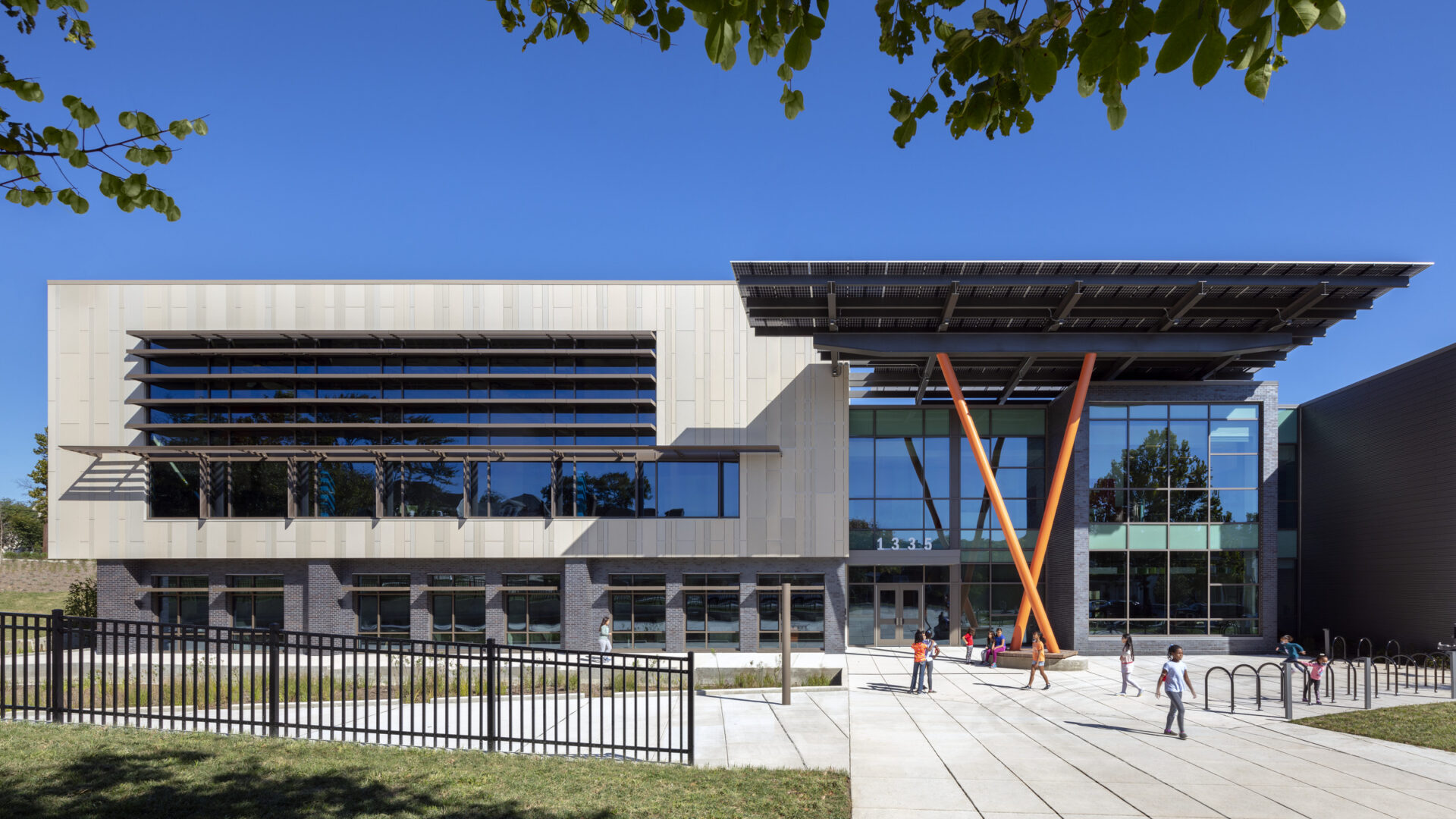Perkins Eastman’s expanding portfolio of high-performance, net-zero ready schools has caught the attention of national advocacy groups working to persuade state and local governments to pursue net-zero goals in all their future renovations and new construction.
UndauntedK12 is a collective of experts in public education, clean energy, banking, and public policy who are focused on helping America’s K-12 public schools address climate change. Together with the Climate Jobs National Resource Center, the groups published “The Financial Case for Net-Zero Energy Schools” in February, which relies extensively on Perkins Eastman’s experience with net-zero design, a concept that means a facility aims to produce at least as much energy as it expends to reduce the need for fossil fuel-powered utilities. According to the report:
Districts and states not making progress toward net-zero schools are increasingly at risk of mismanaging taxpayer resources on school facilities that waste energy, are exposed to the cost of fossil fuels, and will require more costly repairs to recover from extreme weather events and comply with emergent building regulation.
Its conclusion cited a study Perkins Eastman performed in 2020 for Fairfax County Public Schools comparing the life-cycle costs of renovating and building net-zero ready vs. conventional schools.








